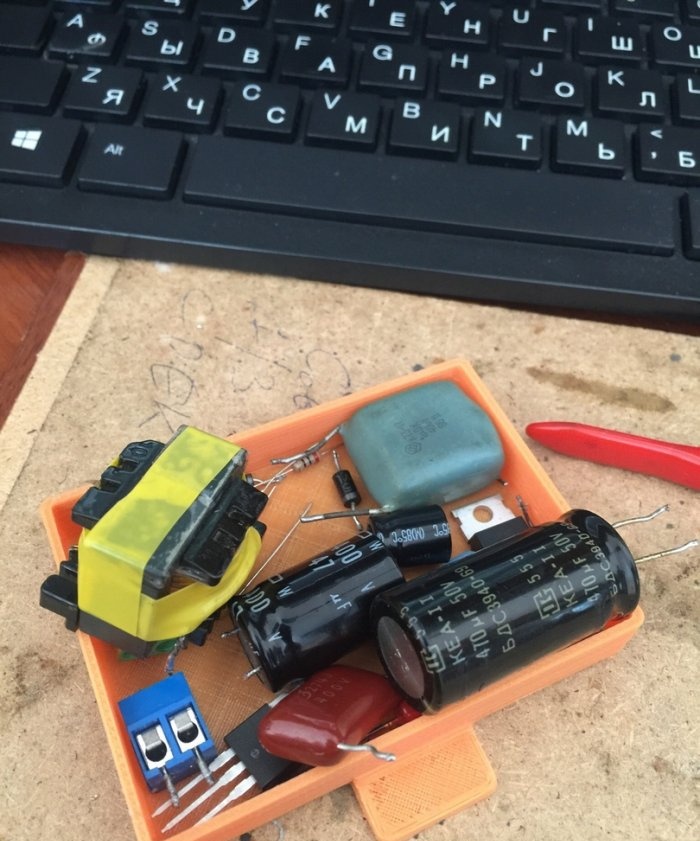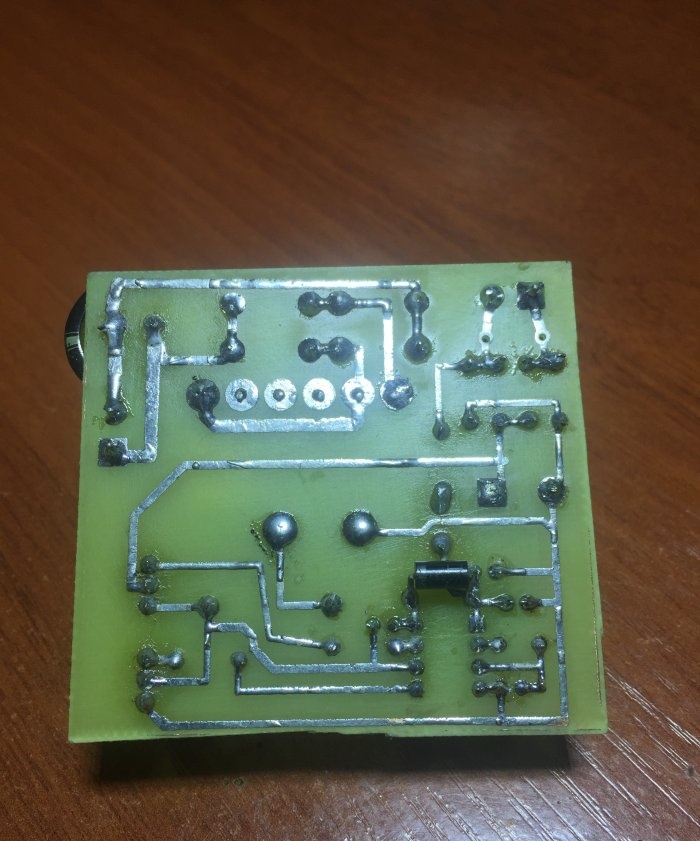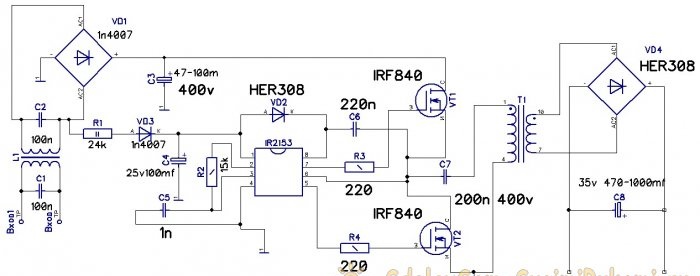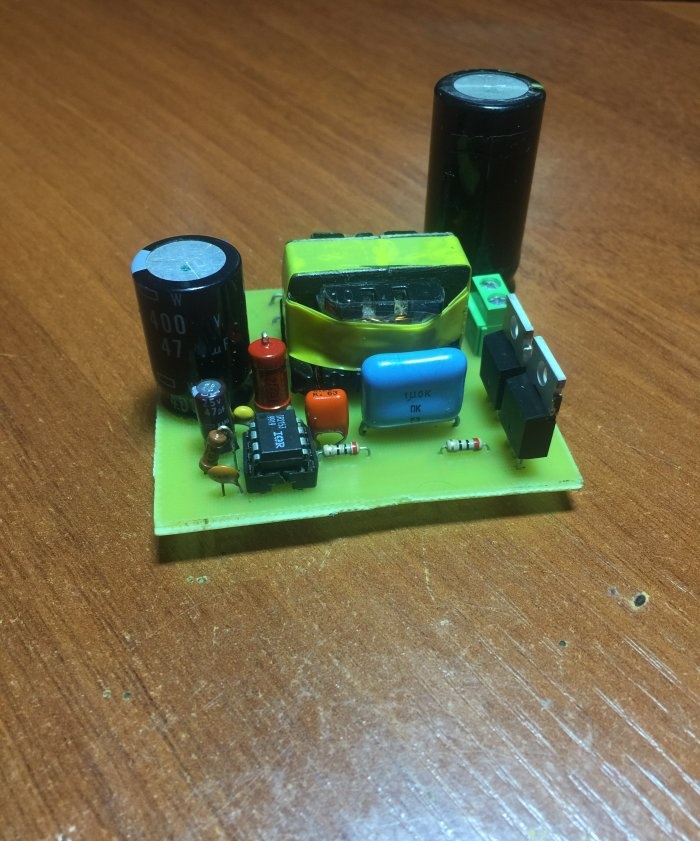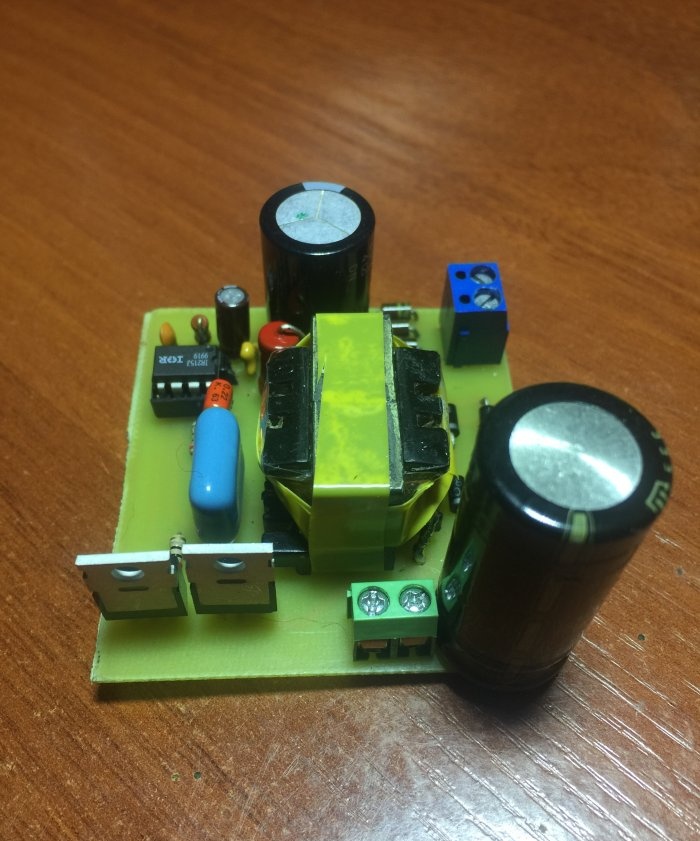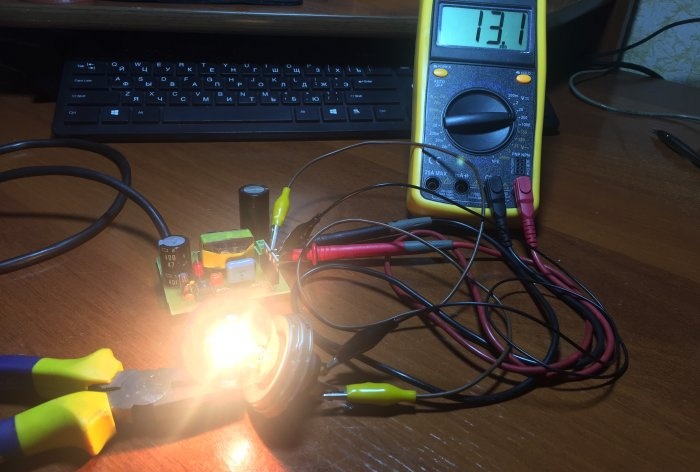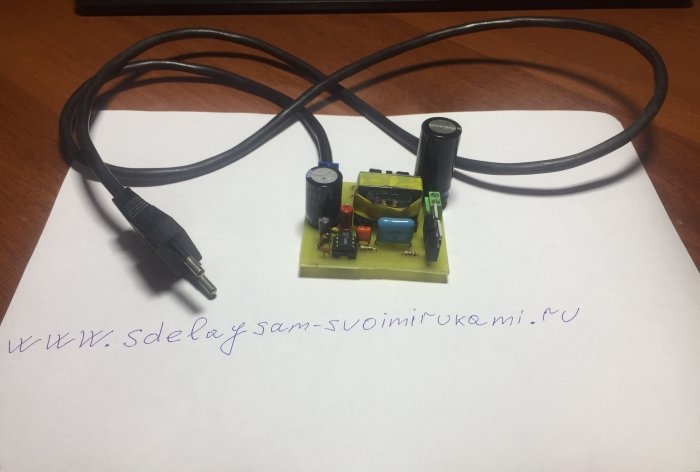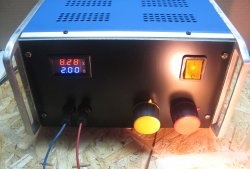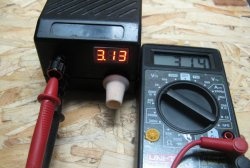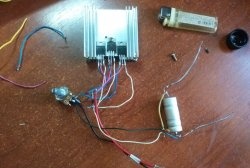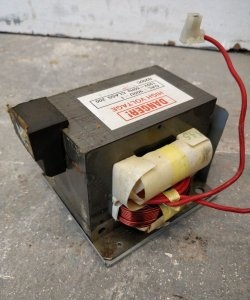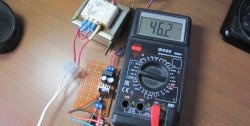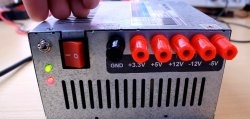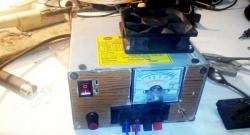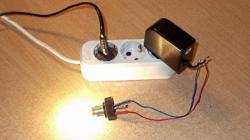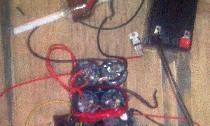The IR2153 chip is a high-voltage shutter driver, it builds many different circuits, power supplies, chargers, etc. The supply voltage varies from 10 to 20 volts, the operating current is 5 mA and the operating temperature is up to 125 degrees Celsius.
Novice hams are afraid to assemble their first switching power supply, very often resort to transformer units. At one time I was also afraid, but still I got together and decided to try it, especially since there were enough parts to assemble it. Now let's talk a little about the scheme. This is a standard half-bridge power supply with an IR2153 on board.
Details
Input diode bridge 1n4007 or finished diode assembly rated for a current of at least 1 A and a reverse voltage of 1000 V.
A resistor R1 of at least two watts is possible and 5 watts is 24 kΩ, a resistor is R2 R3 R4 with a power of 0.25 watts.
The electrolytic capacitor on the high side is 400 volts 47 microfarads.
Output 35 volts 470 - 1000 microfarads. Film filter capacitors designed for a voltage of at least 250 V 0.1 - 0.33 μF. Capacitor C5 - 1 nF. Ceramic, C6 ceramic capacitor 220 nF, C7 film 220 nF 400 V. Transistor VT1 VT2 N IRF840, a transformer from an old computer power supply, a diode output bridge full of four ultra-fast HER308 diodes or other similar ones.
In the archive you can download the circuit and board:
[100.06 Kb] (downloads: 1122)
The printed circuit board is made on a piece of foil-coated single-sided fiberglass using the LUT method. For convenience, connecting the power and connecting the output voltage on the board are screw terminals.
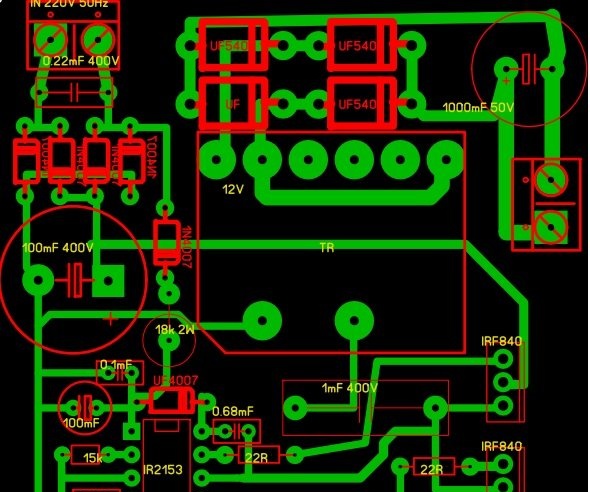
12 V switching power supply circuit
The advantage of this circuit is that this circuit is very popular of its kind and is repeated by many amateur radio enthusiasts as their first switching power supply and efficiency and, to say nothing of the size. The circuit is powered by a mains voltage of 220 volts at the input there is a filter that consists of a choke and two film capacitors designed for voltages of at least 250-300 volts with capacities from 0.1 to 0.33 microfarads and can be taken from a computer power supply.
In my case, there is no filter, but it is desirable to put it. Next, the voltage supplied to the diode bridge is designed for a reverse voltage of at least 400 volts and a current of at least 1 ampere. You can put the finished diode assembly. Further, according to the scheme, there is a smoothing capacitor with an operating voltage of 400 V, since the amplitude value of the mains voltage is around 300 V. The capacitance of this capacitor is selected as follows, 1 μF per 1 Watt of power, since I am not going to pump large currents from this unit, then in my case, there is a 47 uF capacitor, although hundreds of watts can be pumped out of such a circuit. The power supply of the microcircuit is taken from the break, a power supply resistor R1 is organized here that provides current suppression, it is advisable to put at least two watts more powerful since it is heated, then the voltage is rectified by only one diode and supplied to the smoothing capacitor and then to the microcircuit. 1 pin of the chip plus power and 4 pin is minus power.
You can also collect a separate power source for it and apply according to the polarity of 15 V.In our case, the microcircuit operates at a frequency of 47 - 48 kHz for this frequency an RC circuit is organized consisting of a 15 kΩ resistor R2 and a film or ceramic capacitor at 1 nF. In this scenario, the microcircuit will work correctly and produce rectangular pulses at their outputs that are fed to the gates of powerful field keys through resistors R3 R4, their values can deviate from 10 to 40 ohms. Transistors must be set to N channel, in my case there are IRF840 with a working drain voltage of source 500 V and a maximum drain current at a temperature of 25 degrees 8 A and a maximum power dissipation of 125 watts. Next, according to the scheme, there is a pulsed transformer, after which there is a full-fledged rectifier of four HER308 diodes, ordinary diodes will not work here because they will not be able to work at high frequencies, so we put ultra-fast diodes and after the bridge the voltage is already supplied to the 35 V 1000 uF output capacitor , and 470 microfarads of especially large capacitances in switching power supplies are not required.
Let us return to the transformer, it can be found on the boards of computer power supplies, it is not difficult to determine here it is visible in the photo the biggest one we need it. To rewind such a transformer, it is necessary to loosen the glue with which the ferrite halves are glued, for this we take a soldering iron or a soldering hair dryer and slowly warm up the transformer, we can lower it in boiling water for several minutes and carefully disconnect the core halves. We wind all the basic windings, we will wind our own. Based on the calculation that I need to get a voltage in the region of 12-14 volts, the primary winding of the transformer contains 47 turns of 0.6 mm wire in two cores, we make insulation between the winding with ordinary tape, the secondary winding contains 4 turns of the same wire of 7 cores . It is IMPORTANT to wind in one direction, insulate each layer with tape, marking the beginning and end of the windings, otherwise it will not work, and if it does, then the unit will not be able to give all the power.
Block check
Well, now let's test our power supply, since my version is fully functional, I immediately plug it into the network without a safety lamp.
We will check the output voltage, as we see it in the region of 12 - 13 V, it does not walk much from voltage drops in the network.
As a load, a 12-volt automobile lamp with a power of 50 watts current flows accordingly 4 A. If you add such a unit by adjusting the current and voltage, put an input electrolyte of a larger capacity, then you can safely assemble a car charger and a laboratory power supply.
Before starting the power supply, it is necessary to check the entire installation and turn on the mains through a 100 W incandescent safety lamp, if the lamp is on full, then look for errors when installing the nozzle, the flux is not washed out or some component is not working, etc. If the lamp is assembled correctly, it should lightly flare up and go out, this tells us that the capacitor at the input is charged and there are no errors in the installation. Therefore, before installing components on a board, they must be checked even if they are new. Another important point after starting is the voltage on the microcircuit between the 1 and 4 outputs should be at least 15 V. If this is not so, you need to select the value of the resistor R2.

